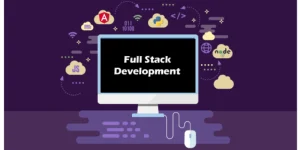In the realm of software development, ensuring the quality and reliability of applications is paramount. Testing is a crucial aspect of this process, which aims to identify and rectify any issues or bugs before deployment. Full stack testing is a comprehensive approach that assesses the entire software stack, from the front-end user interface to the back-end server and database. This blog will discuss a comprehensive guide to full stack testing strategy. If you are interested in learning more about Full Stack Testing and looking for a course, you can check out the Full Stack Developer Course in Chennai at FITA Academy.
What is Full Stack Testing?
Full stack testing involves examining the entire application stack, including the front end, back end, and integration points, to ensure seamless functionality across all components. Unlike traditional testing methods focusing on individual layers or components, full stack testing evaluates the application as a cohesive unit. This approach provides a more comprehensive understanding of the application’s performance and helps uncover potential issues arising from interactions between different layers.
Components of Full Stack Testing
- Front-End Testing: This involves evaluating the user interface (UI) and user experience (UX) of the application. Front-end testing tools such as Selenium and Cypress are commonly used to automate testing across various browsers and devices, ensuring consistent behavior and responsiveness.
- Back-End Testing: Back-end testing focuses on the application’s server-side logic and functionality. This includes testing APIs, databases, server configurations, and business logic. Tools like Postman and JUnit are often employed to automate testing of API endpoints and data integrity.
- Integration Testing: Integration testing verifies the interactions between application components, such as front-end-to-back-end communication and third-party integrations. By simulating real-world scenarios, integration testing helps identify compatibility issues or communication errors that can benefit individuals enrolled in a Full-Stack Developer Online Course.
Benefits of Full Stack Testing
- Comprehensive Coverage: Full stack testing ensures thorough examination of the entire application stack, reducing the likelihood of undiscovered bugs or issues.
- Early Detection of Defects: By testing the application across all layers, potential issues can be identified and addressed early in the development lifecycle, minimizing the impact on project timelines and budgets.
- Improved Quality Assurance: Full stack testing promotes better collaboration between development and QA teams, leading to higher-quality software releases and enhanced user satisfaction.
Best Practices for Full Stack Testing
- Automation: Leverage automation tools and frameworks to streamline the testing process and increase efficiency. Automated tests can be executed quickly and repeatedly, enabling faster feedback loops and continuous integration/deployment (CI/CD) pipelines.
- Realistic Test Scenarios: Develop test cases that mimic real-world usage scenarios to uncover potential issues under actual operating conditions. This includes testing for scalability, performance, and security vulnerabilities.
- Continuous Monitoring: Implement continuous monitoring practices to track application performance and user feedback in real-time. Monitoring tools such as New Relic and Splunk can help identify and address issues proactively, ensuring optimal application performance.
The full-stack testing strategy is essential for ensuring the quality, reliability, and performance of modern software applications. By evaluating the entire application stack, from front-end UI to back-end server logic, full-stack testing provides comprehensive coverage and early detection of defects. By following best practices and leveraging automation tools, development teams can streamline testing and deliver high-quality software that meets user expectations. If you want to enhance your skills, consider enrolling in a Training Institute in Chennai that offers courses on full-stack testing and related technologies.
Also Read: Full Stack Developer Interview Questions and Answers

